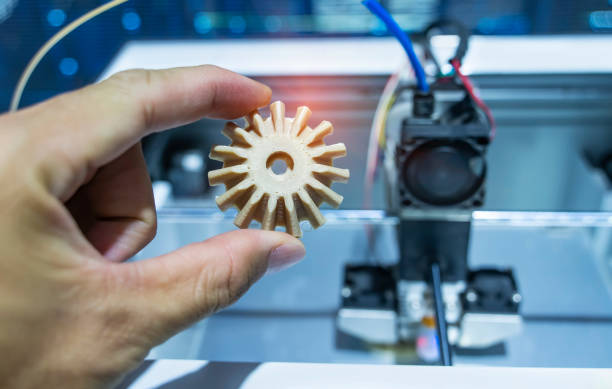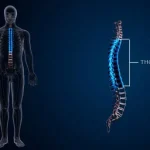As 3D printing becomes more widely adopted in manufacturing, engineering, and design, the materials used in these processes are gaining just as much attention as the machines themselves. Among the many plastics available, ABS (short for acrylonitrile butadiene styrene) remains one of the most dependable choices for creating parts that need to hold up in everyday use.
This thermoplastic has been a favorite in industrial settings for years and continues to play an important role in 3D printing for practical applications.
Don’t miss today’s feature — bold ideas and stories worth your time.
Why ABS Is a Reliable Choice for Durable Prints
ABS is valued for its combination of toughness, flexibility, and resistance to high temperatures. These properties make it a practical option for parts that might be exposed to physical stress, vibration, or occasional bumps. Compared to more brittle materials like PLA, ABS can handle more abuse without cracking, which is important when the printed parts are more than just display models.
This strength also means ABS can be used to simulate certain characteristics of injection-molded components. For engineers or product designers working on functional prototypes or enclosures, this makes ABS a strong candidate when evaluating how a final product might behave.
Common Use Cases Where Strength Matters
In the real world, 3D printed parts made from ABS show up in many familiar places. These include housings for electronics, brackets and mounts in mechanical systems, or even replacement parts for appliances. The material also sees use in automotive settings, especially for testing and fit-checking interior components or dashboard assemblies.
Because it can be easily sanded and post-processed, ABS also works well in situations where the part needs to be painted or finished after printing. That flexibility allows both form and function to be prioritized.
For businesses or individuals without in-house printing equipment, a trusted abs 3D printing service can help produce parts that are strong enough for testing, presentation, or even light end-use, all without investing in specialized printers or ventilation setups.
Printing Challenges and Design Considerations
Despite its benefits, ABS can be more difficult to print than some entry-level materials. It requires a heated bed and a consistent printing environment to avoid warping or cracking. The fumes generated during printing also make proper ventilation important.
From a design perspective, ABS tolerates slight variations in geometry well, but thin walls or unsupported overhangs can lead to weaker prints. Parts printed in ABS also tend to shrink slightly as they cool, so adjustments during the design phase are often needed to ensure a proper fit.
These challenges are manageable for experienced users or professional services that routinely work with engineering-grade materials. Choosing the right orientation, supports, and print settings can make a significant difference in strength and surface quality.
The Role of Local 3D Printing in ABS Projects
For those who need strong ABS parts but want to avoid trial-and-error at home, tapping into 3D printing in Boston MA or other local hubs offers an accessible path forward. Local providers can help with file preparation, design for manufacturability, and proper material selection based on the project’s goals.
Having a physical partner nearby also makes it easier to check parts, make quick changes, or discuss specifications without delay. This is especially useful when prototyping on a deadline or trying to reduce shipping and turnaround times.
ABS in Education and Hobbyist Applications
Beyond commercial and industrial use, ABS is also popular among educators and hobbyists who want to teach or experiment with functional design. Its durability makes it suitable for classroom demonstrations of engineering principles or physics models that need to be handled repeatedly.
In makerspaces or home workshops, ABS is often the go-to material when reliability matters, such as for making fixtures, tool holders, or small mechanical parts. These personal projects benefit from the same properties that make ABS attractive in professional settings, especially when function is a priority.
Environmental Considerations and Recycling
While ABS is a petroleum-based plastic, some initiatives are emerging to recycle ABS waste from 3D printing. Users interested in sustainability can look into closed-loop systems or recycling programs that accept clean ABS scraps.
As 3D printing technologies continue to evolve, so do the efforts to make them more environmentally responsible. For those who prioritize material reuse, these efforts can be a valuable part of planning a long-term 3D printing strategy.
ABS and Iterative Design
When working on a new product, the ability to revise and reprint quickly is key. ABS lends itself well to this kind of iterative process. Whether the issue is a small measurement tweak or a structural change, updates can be printed and tested in short cycles. Since the material cost is relatively low and setup time is minimal with experienced providers, ABS printing makes fast changes practical.
Even if the final product will eventually be injection molded, starting with ABS prints allows designers to confirm critical design elements early in development.
Choosing ABS for Your Projects
For anyone developing functional parts or testing prototypes, ABS offers a practical balance of strength, thermal resistance, and flexibility. It remains one of the most dependable materials for producing durable components through additive manufacturing.
Whether you are testing how a product will perform in real conditions or building a part meant to handle repeated use, ABS provides consistent results that support real-world applications.
Handpicked and trending — discover the featured posts everyone loves at 2A Magazine.







